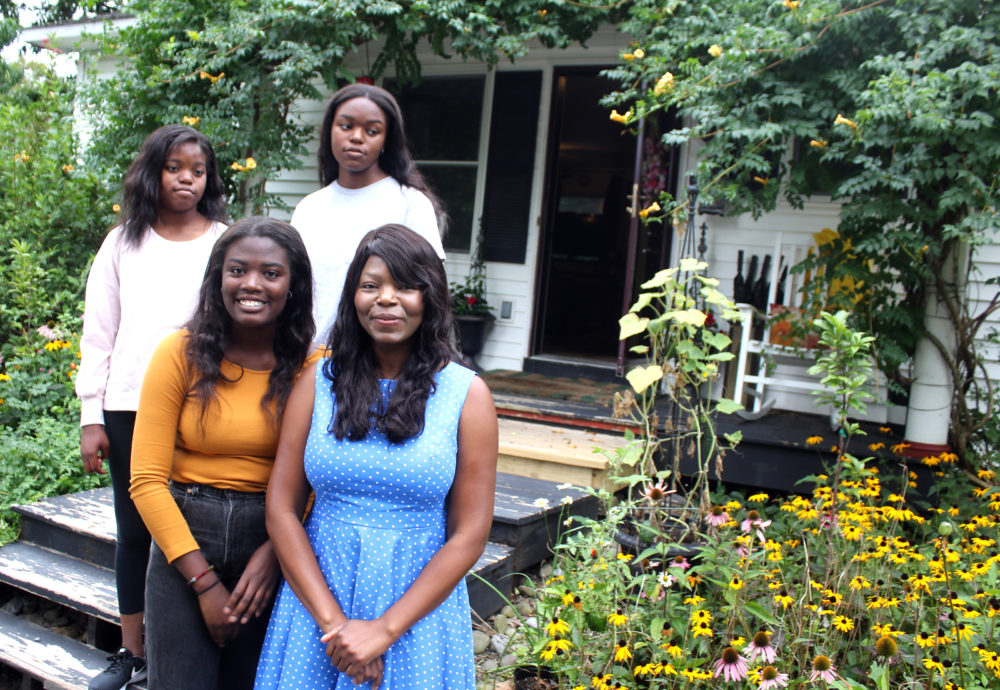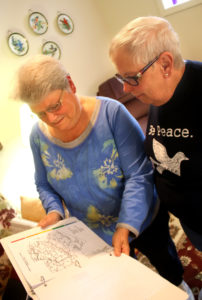ANNIVERSARY CELEBRATION SUNDAY
Habitat For Humanity:
35 Homes In 30 Years

By LIBBY CUDMORE • Special to www.AllOTSEGO.com

ONEONTA – A decade ago, Lois Newell felt hopeless.
“I was living in an apartment on Academy Street, my window faced the back of the Salvation Army,” she said. “I would look at that wall every day and cry. I was freshly divorced, I had no money and no resources. I wanted hope, a better life for my kids.”
Now, when she looks out her window, she sees an apple tree and the wildflower garden she’s cultivated in the yard of her Habitat For Humanity house, one of 35 the the nationwide organization’s local chapter has built locally over the last three decades.
This Sunday, Sept. 15, Habitat for Humanity of Otsego County will celebrate its 30th anniversary with an open house 2-4 p.m. at the Elm Park Methodist Church, Oneonta.
The local chapter started in 1989, when a class at the First United Methodist Church began looking at issues effecting the community, including a lack of access to safe, affordable housing.
“This was an outgrowth of folks in that class who wanted to get a chapter started,” said Mary Ann Dowdell, board president.
They built their first home, on Oneonta’s Reynolds Avenue, in 1990. “It took a while to build because we had to raise a lot of money,” said Dowdell.
Since then, Habitat’s built 35 houses, including two others next door to Newells’ home on Reynolds Avenue, and work has begun on nine homes on Route 205, south of Laurens. “Until we started those nine houses, those three were our biggest development.”
The works is all done by volunteers, and funded through a combination of grants and fundraising. “You name it, we’ve done it to raise money.”
They also rely entirely on volunteers, with the exception of the site supervisors, who teach the volunteers how to build. “If you want to learn how to do plumbing, siding or sheetrock, they can teach you.”
“We have such great volunteers,” said Marjorie Pietraface, volunteer committee chair. “And we’ve had ‘Caravaners’ come up from down south to help on a project for a few weeks. One couple wanted to help build in every single state; their whole RV was covered with stickers from places they’d worked.”
Once selected, a partner family must prove that they have the means to take on the mortgage – $80-$100,000 in low-interest Rural Housing loans – and put in 250 hours of sweat equity working on their home and others.
“Sweat equity shows that the family has a real investment in the house,” said Dowdell. “It also teaches them how to fix things, and it gives them a sense of pride.”
“I changed a bathroom pipe the other day,” said Newell. “And I replaced the kitchen faucets. I learned how to do that with Habitat for Humanity.”
She also assisted the architect, Dennis Murray, in designing the house. “The wall between the kitchen and the living room wasn’t load-bearing, so I asked him to take it out,” she said. “Having an open floor plan was better for my daycare business.”
When the house is finished, the partner family takes on the mortgage. “I think there’s this misconception that Habitat for Humanity just gives you a house,” said Dowdell.
And when families finish paying off their mortgage, they are invited to ceremony at Habitat for Humanity, where they are given the deed.
In addition to building houses, they have rehabbed two houses, one for a homeowner and another as a foreclosure. “We bought it from the bank and gutted it,” said Dowdell. “It was an old house, but we had a big family to go in it, so it worked out well.”
Habitat’s also built five wheelchair-accessible ramps onto existing houses.
“We don’t just want to build homes,” said Pietraface. “We want to build communities.”

